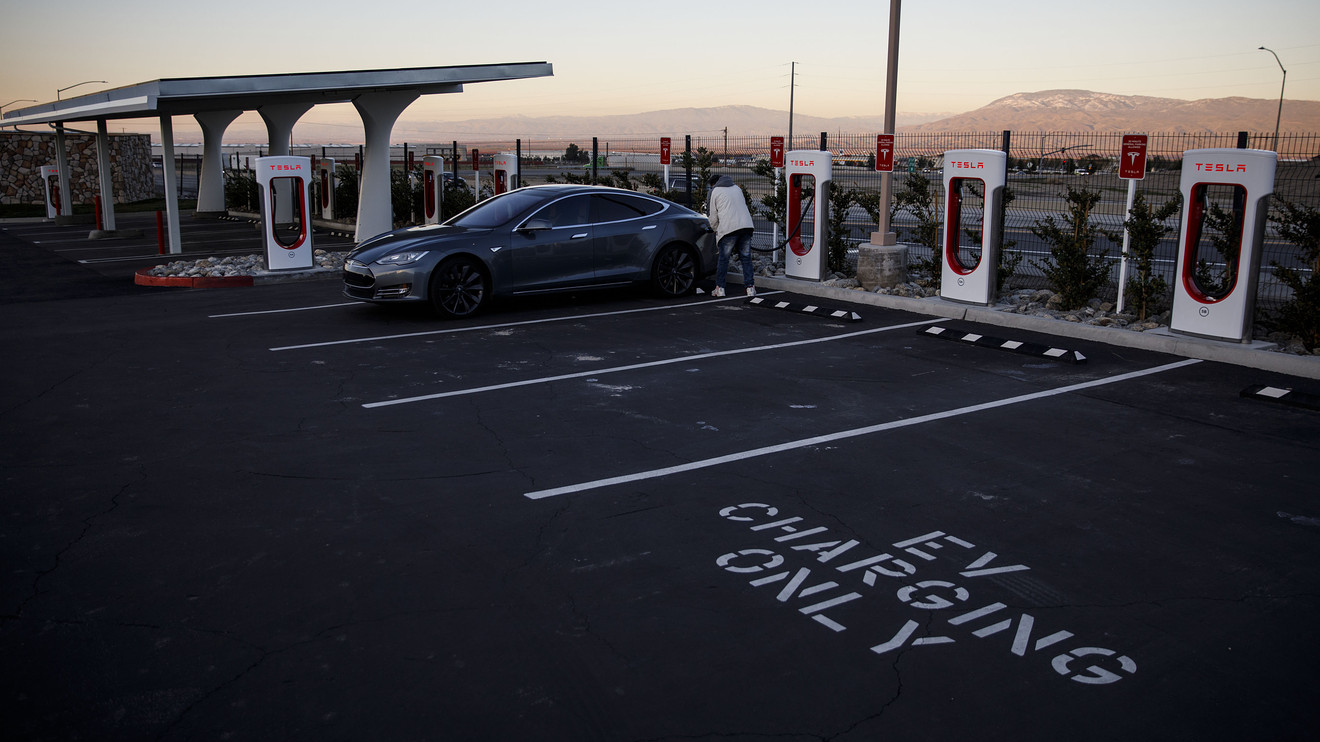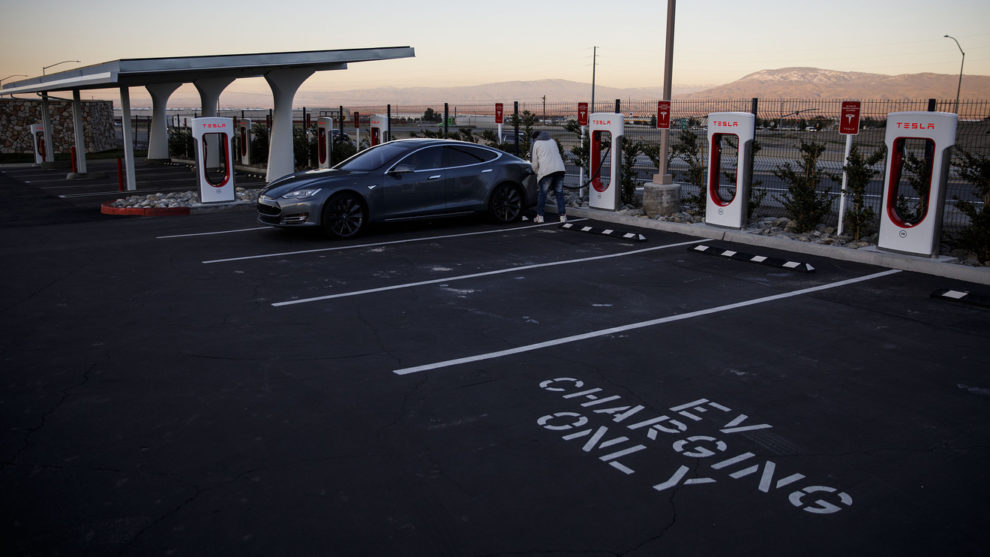
Let’s go back in time to June 2008, when Apple introduced the iPhone 3G. Nokia then was the world’s largest phone maker. What we did not know at the time was that Nokia was actually the largest dumb phone maker and that Apple was about to become the largest smartphone maker — a crucially important nuance.
The mistake many investors made back then, including yours truly, was missing the fact that the iPhone is not a phone, but a portable computer that also makes phone calls. Apple AAPL, +0.04% did not dethrone Nokia NOK, +1.41% ; Nokia did that to itself. Nokia should have looked at the iPhone and thanked Apple for showing the future of the phone — then gone on to develop its own smartphone.
Which brings us to Tesla TSLA, +2.95% and traditional carmakers. The transition from internal-combustion-engine (ICE) cars to electric vehicles (EV) is not just a technological shift within a domain, like the transition from two-wheel-drive sedans to four-wheel-drive SUVs. This is a radical shift into a new domain. In theory, nobody knows more about making cars than the traditional ICE carmakers, and so EVs made by these companies should be the ones busying our streets a decade from now. Yet the success of ICE car manufacturers in this new domain is anything but guaranteed.
ICE cars are Nokia phones; Tesla’s Model 3 is an iPhone 3G. Cars last about 12 years and phones two to three, so this transition will happen slowly. During this time, many of the assets and much of the knowledge from the old domain will become liabilities in the new one.
Tesla broke out of the domain of existing auto manufacturers. Because Tesla created the EV industry, it had the advantage of acting from first principles. It could start with a blank piece of paper. As Musk once told an interviewer: “I tend to approach things from a physics framework … physics teaches you to reason from first principles rather than by analogy.”
This first-principles approach allowed Tesla to build EVs that are free from the limitations of gasoline-car thinking. No gears, a skateboard chassis, two engines, a “frunk,” a credit-card key, a mobile app that works as a key and controls the car, and no start button, among others. Tesla applied first-principles thinking to how its cars would be sold and serviced.
Today’s ICE auto manufacturers are basically wholesalers of their cars to auto dealers that are their franchisees. This business model is a Great Depression relic that went basically unchallenged until Tesla came along. Tesla decided that the traditional business model was not appropriate for the new EV domain. Instead, it borrowed from Apple, which controls the full customer experience, from buying a phone to servicing it to upgrading to a new one.
Consider: My purchase of a $51,000 Model 3 was as easy as my purchase of a $900 iPhone. I test-drove the car. A few days later, I called the Tesla store and told the salesperson I wanted to buy it. My information was already in the system. A few days later, I got an email confirming the delivery date and asking me to schedule a pickup time. One morning this past June, I showed up for my car at 9:30 a.m. — 10 minutes later I was driving home. It was that simple.
Tesla changed how a car is serviced, too. A few weeks after I bought the Model 3, its speakerphone stopped working. I went into the Tesla iPhone app and requested service. I was given a choice between bringing my car to the Tesla service center or having a service technician come to me. I chose the latter. Two days later, the technician showed up at my office. I gave him my car key and went back to work. An hour later my car was fixed. Tesla’s technician had simply restarted my computer. In hindsight, I could have called Tesla and my speakerphone issue could have been fixed remotely.
It is difficult for traditional car companies to adapt first-principles thinking, as it requires them to unlearn what made them successful.
Now compare this experience with buying and servicing an ICE car. It is difficult for traditional car companies to adapt first-principles thinking, as it requires them to unlearn what made them successful in the old domain. They are going to have to retool their factories and go through a significant and painful change of their workforce. Their current employees have a different skill set and look at the world through petrochemical lenses (one reason perhaps why General Motors’s GM, +0.50% initial foray into EVs was the Chevrolet Volt, an electric car with a gasoline engine).
Auto dealers, an asset to car companies today, are tomorrow’s liabilities, as Tesla’s direct distribution and service model should provide a cost advantage once it gets to scale. Tesla’s model is more customer-friendly and efficient, allowing the company to capture the profit that ICE carmakers share with their dealers. Because a good number of Tesla’s cars are built to order, the company doesn’t need massive inventory sitting on parking lots. Moreover, ICE manufacturers may not be able to replicate Tesla’s direct-sales business model because they are stuck with the franchise agreements they signed with their dealers.
Read: Tesla’s competitors find that going electric has its own set of problems
Some ICE automakers are waking up to the importance of electric vehicles. Recently, for example, BMW BMW, +1.69% announced that it will bring 12 electric cars to market in 2023, two years earlier than expected. Still, it won’t be easy for ICE carmakers to adapt first-principles thinking to their EVs — but they may not need to: they can copy Tesla, as Nokia should have done with Apple.
So existing ICE companies are not automatically doomed. William Durant, who turned struggling Buick into General Motors, originally made his millions on horse-drawn carriages. Samsung Electronics 005930, -0.75% , which was a large dumb-phone maker, transformed into one of the world’s biggest smartphone makers. Samsung did a great job of copying the iPhone with help from Alphabet’s GOOGL, -0.03% Google; instead of developing its own operating system, Samsung used Google’s Android.
Given the enormity of the needed investment, carmakers are creating alliances. Ford Motor F, -1.11% and Volkswagen VW, +1.79% , for instance, are working together on artificial intelligence and skateboard chassis for EVs. Yet such alliances in the auto industry previously have had mixed success.
Traditional car companies do have strengths in designing, assembling, and marketing cars. They use legions of suppliers to make the parts that go into their cars. They can do the same thing when it comes to EVs. They can outsource the battery to LG Chem 051910, -0.31% or Samsung. They can outsource software design to the likes of Cognizant Technology Solutions CTSH, +0.55% and DXC Technology DXC, -1.96% (we own both of these stocks in our portfolios). They can use Alphabet’s Waymo self-driving software and Nvidia’s NVDA, -0.94% self-driving hardware. Plus, traditional automakers are in their best financial shape in decades and have capital to finance the EV adventure. They can afford to make an enormous investment in EV and absorb the losses that come with them. But will they?
To some degree, their job is more difficult than Tesla’s. They have to keep innovating as they make ICE cars because ICE cars pay their bills. At the same time, they have to focus on the future and invest enormous amounts of time and capital into EVs.
For ICE automakers to succeed in electric vehicles, they should set up separate EV units with management reporting to the board of directors. The EV management team should be given a blank check, equity in the new company, and the ability to hire people from inside and, most important, outside of the company. The existing ICE business should be run with a focus not on growth but on maximizing cash flows. It will be difficult to do, considering that these companies will need to introduce new, exciting cars every few years and entice consumers to buy them, just to keep financing their losses on EVs.
Read more: How electric vehicles will disrupt the auto industry, including whether Tesla and traditional automakers will survive in the long run, and who’s right in the Tesla bull vs. bear debate.
Vitaliy Katsenelson is chief investment officer at Investment Management Associates in Denver, which holds shares of Cognizant Technology Solutions and DXC Technology, but no positions in any of the other companies mentioned in this article. He is the author of “Active Value Investing” (Wiley) and “The Little Book of Sideways Markets” (Wiley).
How does one invest in this overvalued market? Our strategy is spelled out in this fairly lengthy article.
Read: Why Tesla’s future might not be in Elon Musk’s hands
Plus: Tesla’s solar-roof sales will grow ‘like kelp on steroids,’ Musk vows








